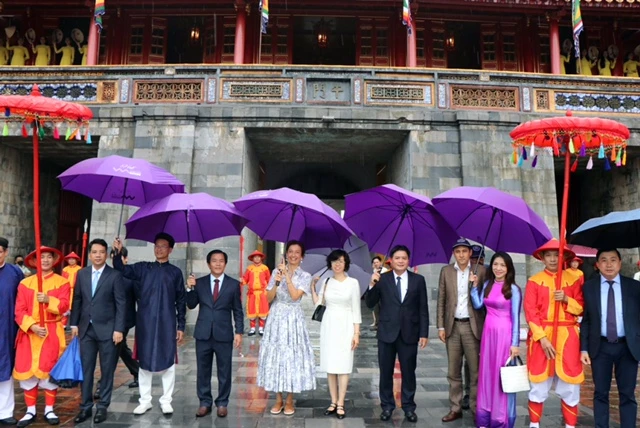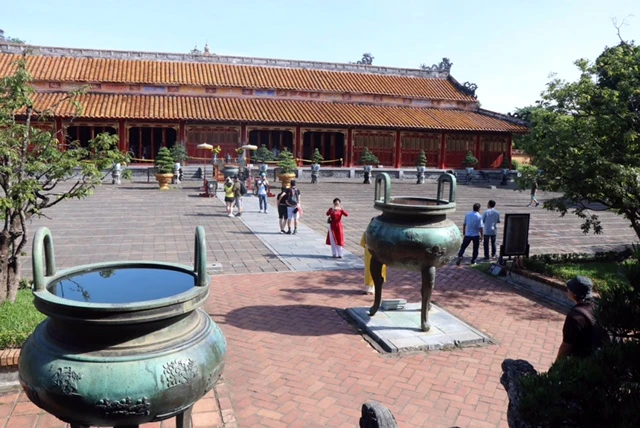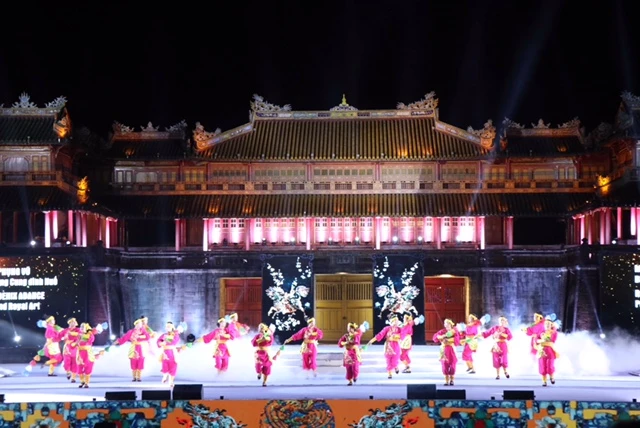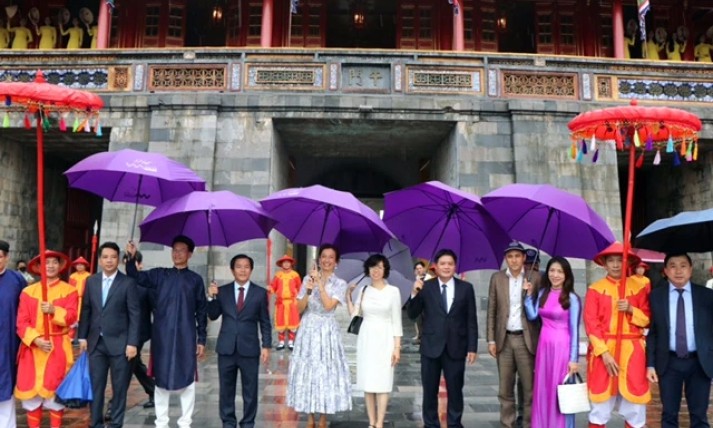Hue ancient city – Land of UNESCO heritages
The central province of Thua Thien-Hue is now the only locality in Vietnam, and also Southeast Asia, to boast six UNESCO World Heritages. These include the Imperial City of Hue, the Hue Court Music, the Woodblocks of the Nguyen Dynasty, the Official Records of the Nguyen Dynasty, the royal literature on Hue royal architecture, and the castings on the Nine Dynastic Urns in the Hue Imperial Palace.

This impressive collection underscores the locality’s unique historical and cultural significance, earning global recognition for the Imperial City of Hue as a key site in the story of human civilisation. These heritage treasures have become vital assets for the local economy, offering immense potential for its socio-economic growth, while positioning Hue as a distinctive cultural and heritage hub in Vietnam.
As Vietnam continues to undergo industrialisation, modernisation, and deeper international integration, the Imperial City of Hue stands as a proud symbol of the nation's rich history. Serving as the seat of 13 Nguyen Dynasty kings (1802-1945), Hue is home to an immense cultural heritage system. It also serves as a vital link between the past, present, and future of Thua Thien-Hue province in particular, and Vietnam as a whole.
Among UNESCO’s designations, World Heritage status is the most prestigious and long-standing. Phan Thanh Hai, Director of the Thua Thien-Hue provincial Department of Culture and Sports, said that the inclusion of Hue's cultural heritages on the UNESCO lists presents valuable opportunities to preserve, and promote these historical treasures. It also raises the locality’s profile as a unique cultural hub of the country, while creating a globally recognised brand that positions Hue as an attractive destination on Vietnam's tourism map.
This recognition has helped the province chart a clear path for development by positioning cultural heritages as the foundation and core of comprehensive and sustainable growth. It plays a crucial role in realising the goal of transforming Thua Thien-Hue into a centrally-run city, built on preserving and enhancing the legacy of the Imperial City and Hue's unique cultural identity.

Despite enduring numerous historical upheavals, the ravages of war, and harsh weather, many of the Imperial City’s architectural structures were severely damaged. UNESCO’s recognition of the Imperial City of Hue as a World Heritage Site in 1993 marked a turning point in the restoration of its heritages. To date, over 200 buildings and structures have been preserved, restored, and rehabilitated, including iconic sites such as the Kien Trung, Ngo Mon and Thai Hoa Palaces, Hien Lam Pavilion, The To Shrine, and several royal tombs.
According to UNESCO’s assessment, the preservation of Hue’s heritages has entered a phase of stabilisation and sustainable development. In 2023, in the celebration marking 30 years since the Imperial City of Hue and 20 years since the Hue Court Music were designated as UNESCO World Heritage, Director of the UNESCO World Heritage Centre Lazare Eloundou Assomo said that the ancient capital has shifted from being a treasure trove of heritage in ruins to becoming a prominent symbol of heritage preservation. This success story has not only brought about hope but also provided invaluable inspiration for the protection of World Heritage sites in today’s challenging context.
With the rapid development of science and technology, the digitisation of artifacts and cultural objects has become an inevitable trend and an important foundation for Thua Thien-Hue. This initiative addresses the challenge of utilising heritage resources for the cultural industry and heritage-based economy, while helping to spread and promote the values of Hue’s heritages in the digital space. Currently, the Hue Monuments Conservation Centre is collaborating with digital technology companies to digitise approximately 11,000 artifacts and objects in 3D. This includes the identification of key artifacts using cutting-edge technology and the launch of the digital exhibition platform “museehue.vn”, allowing anyone around the world to explore and learn about Hue’s rich heritages.

Thanks to its well-connected transportation infrastructure, including road, rail, air, and seaport links, Thua Thien-Hue attracts millions of visitors each year for sightseeing and leisure. Making the most of its rich heritage, the province became the first in Vietnam to create a contemporary festival format and successfully build the "Hue Festival" brand based on its cultural and historical legacy. Today, the Hue Festival is recognised as a national and international event, offering visitors unique and immersive experiences in culture, history, and the arts. It serves as a vibrant platform for cultural exchange, bringing together artistic performances from various countries around the world.
Recognising the importance of festivals in the development of the cultural industry, Thua Thien-Hue has set the goal of organising activities of the Hue Festival throughout all four seasons, starting in 2022. This approach aims to maximise the potential of the province's rich festival heritage, which includes about 500 different events, and create tourism products that offer fresh, dynamic, and attractive experiences for visitors, keeping Hue a lively and enticing destination.
Building strong brands for a heritage city and a tourism destination is crucial. In addition to its existing titles, such as ASEAN Cultural City and Green Tourism City, Hue is working towards becoming a UNESCO Creative City in the field of gastronomy, aiming to offer a fresh appeal to both domestic and international visitors. The cultural heritage of the ancient capital, recognised by UNESCO, is experiencing a powerful revival, adapting to contemporary life, and contributing to the creation of attractive tourism products. This helps strengthen the brand "Hue – One Destination, Six UNESCO World Heritage," positioning the city as a must-visit destination for heritage and cultural tourism./.
 Loading
Loading  Tiếng Việt
Tiếng Việt English
English 中文
中文


